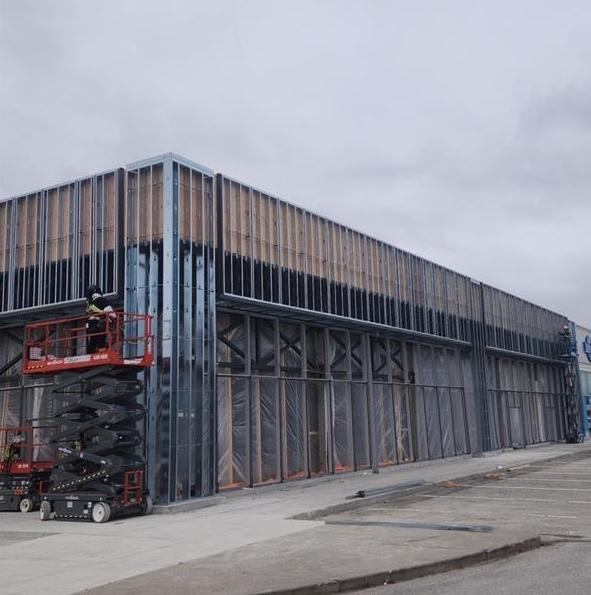
Harnessing Efficiency: An Introduction to Light Gauge Steel Framing Systems
In the ever-evolving construction landscape, light gauge steel is heralding a revolution, redefining the paradigms of building frameworks with its strength and durability. This comprehensive exploration dives deep into light gauge steel, unfolding its multifaceted advantages, applications, and the transformation it brings to modern construction techniques. For professionals looking to adapt to the most reliable and advanced building methods, understanding the ins and outs of light gauge steel becomes paramount.
Unraveling the Concept: What is LGS?
Light gauge steel refers to a construction method characterized by the use of cold-formed steel. While steel in construction is no new notion, the light gauge version pertains to steel sheets put through a cold forming process to fabricate framing materials. This steel, thin yet robust, forms the backbone of various building types, providing an alternative that upholds structural integrity and offers a gamut of benefits over traditional wood or concrete frameworks.
The Indispensable Advantages
Navigating through the construction process involves critical decision-making, where materials play a pivotal role. Opting for light gauge steel comes with an assurance of advantages that cater to durability, cost-effectiveness, and sustainability.
Strength and Durability Factor
High-strength and resilience against weather conditions are trademarks of light gauge steel. It withstands natural forces, showing less wear and tear over time compared to wood, making it ideal for structural longevity and less concern for the building’s lifecycle costs.
Eco-Friendly Construction
In the modern world’s eco-conscious context, LGS shines with its recyclability, reducing construction waste. Its lighter weight compared to traditional materials also translates into lower transportation emissions and energy efficiency, contributing positively to the project’s environmental footprint.
Versatility and Design Freedom
Beyond strength and sustainability, LGS offers unparalleled versatility. Its malleability allows for innovative design conceptions, complex architectural aesthetics, and efficient use of space, pushing the boundaries of creative freedom in construction realms.
LGS Framing: A Practical Insight
Understanding the practical side of LGS framing requires delving into its application process. The procedure involves precision-engineered techniques, ensuring each steel piece conforms to specific standards, contributing to the overall stability of the building structure.
The assembly process, facilitated by modern design software, enhances accuracy, allowing for pre-fabrication of panels and modular components. This precision-driven approach minimizes on-site adjustments, streamlining the construction timeline, and mitigating potential errors associated with traditional building methods.
Overcoming Challenges: Resolving Common Misconceptions
Despite its burgeoning popularity, several misconceptions surround light gauge steel construction, often related to its cost and architectural limitations. However, when factoring in the material’s durability, ease of maintenance, and reduced construction timelines, its cost-efficiency becomes evident. Furthermore, contrary to popular belief, light gauge steel is conducive to a wide range of architectural styles, not limiting but rather empowering architects and designers to explore innovative aesthetics.
The Future of Construction: LGS
With a continual push towards sustainable, resilient, and versatile construction solutions, light gauge steel stands at the forefront of future building methodologies. Its role in reducing project timelines and enabling lightweight, durable construction underscores its relevance in upcoming industry trends, including modular and off-site construction models.
Advancements in integrating technology with steel production, such as 3D printing and AI-based precision engineering, also hint at an era where customizability and efficiency are not mutually exclusive, but rather the cornerstone of modern construction ethos.
Conclusion
Embracing light gauge steel is more than adopting a construction material; it’s investing in a future-proof building solution. As this exploration reveals, the multifaceted advantages, combined with operational practicalities and a commitment to overcoming misconceptions, position light gauge steel as a revolutionary force in the construction sector. For professionals ready to step into the future of resilient, creative, and sustainable building, light gauge steel emerges not just as an option, but as the definitive answer.
FAQ
-
How does LGS Framing compare to traditional wood framing in terms of strength and durability?
Light Gauge Steel Framing offers superior strength and durability compared to traditional wood framing. Steel is inherently resistant to issues like rot, pests, and fire, which can affect wood framing. LGS systems provide a longer-lasting and more resilient structural framework.
-
Can Gauge Steel Framing Systems be customized to suit specific architectural designs?
Absolutely. LGS Framing Systems can be customized to accommodate a wide range of architectural designs. The precision of steel components allows for intricate and innovative designs, including curved walls, complex rooflines, and open floor plans.
-
Are LGS Framing Systems environmentally friendly and sustainable?
Yes, LGS Framing Systems are environmentally friendly and sustainable. Steel is highly recyclable, making it an eco-friendly choice. Additionally, the increased space for insulation in LGS systems improves a building’s energy efficiency, reducing its environmental footprint over time.
For those seeking the best in the business, Cambridge Drywall Services offers unmatched expertise. With 20 years in the industry, serving both residential and commercial projects, we’re your go-to for top-tier drywall solutions. Connect with us today and experience the Cambridge Drywall difference.
